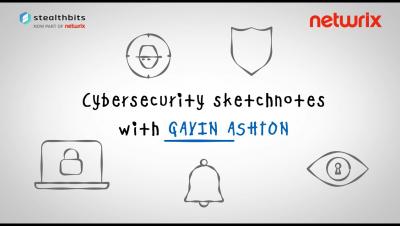Security | Threat Detection | Cyberattacks | DevSecOps | Compliance
Netwrix
Cybersecurity sketchnotes: Lessons learned from the HAFNIUM Attack
What Is Security Information and Event Management (SIEM)?
A cyberattack is expected to occur every 11 seconds in 2021 — nearly double the frequency just a year earlier. These incidents often involve breaches of sensitive proprietary information and cost the organizations involved millions of dollars. Despite all the resources being devoted to improving cybersecurity, new threats continue to arise faster than defense capabilities.
SIEM Use Cases: Implementation and Best Practices
A security and information event management (SIEM) tool can be a valuable component of a mature security strategy. Indeed, effective SIEM solutions have been available for well over a decade. Organizations typically purchase SIEM tools expecting fast implementation and reliable security threat alerts that provide the intelligence required to respond promptly and prevent breaches. The reality is quite different.
SIEM vs Log Management
It now takes organizations 207 days to identify and 73 days to contain security breaches, according to IBM’s 2020 Cost of a Data Breach Report. That means the average “lifecycle” of an incident is a staggering 280 days — 7 months! Moreover, cybercrimes are becoming increasingly sophisticated and attackers are quicker than ever when it comes to finding cracks in corporate infrastructure.
Top 10 Event Categories to Monitor in the Windows Server Event Log
Active Directory Auditing Guidelines
Active Directory and AD Group Policy are foundational elements of any Microsoft Windows environment because of the critical role they play in account management, authentication, authorization, access management and operations. Accordingly, proper Active Directory auditing is essential for both cybersecurity and regulatory compliance.
Cybersecurity sketchnotes with Gavin Ashton: Evolution of the attack surface
[Infographics] Compliance Landscape 2021
Organizations are recognizing that data security compliance is a foundational element of any successful business. The demand for compliance officers, IT security professionals and data protection officers is growing; spending on compliance programs is increasing; and businesses are treating compliance as a key part of their overall strategy. Some compliance teams are still struggling to secure the resources and personnel needed to build a robust and proactive compliance program.






